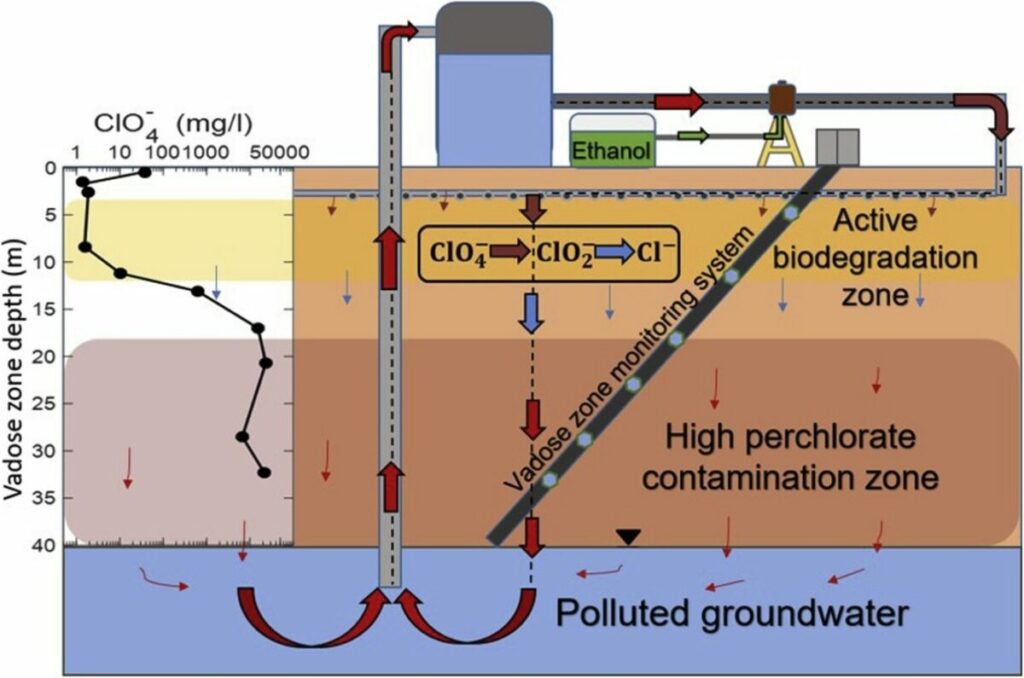Highlights
- In-situ treatment for perchlorate-contaminated vadose zone.
- Use of the high biological potential of the upper soil as a natural bioreactor.
- Down-leaching of perchlorate to groundwater for cyclic treatment in the soil.
- Detecting and decreasing competitive reduction processes in the unsaturated zone zone.
Abstract
Perchlorate is considered a rapidly spreading environmental pollutant. In Israel, it has been found at high concentrations in the vadose zone (up to 30,000 mg/L) and groundwater (up to 800 mg/L) underlying former industrial waste ponds. A perchlorate-reduction method that utilizes the high degradation potential of shallow soil and the high mobility of perchlorate across the deep unsaturated zone has been proposed. The combined treatment method includes recurrent pumping and application of polluted groundwater amended with an electron donor to the shallow soil layers. As a result, perchlorate is biodegraded in the upper soil, and the treated water drains through the unsaturated zone, displacing the pollutant toward the water table, where it is immediately pumped back to the surface for further treatment through a cyclic process. In the current study, the combined treatment approach was tested in a full-scale unsaturated zone (40 m), long-term (1 year) field experiment. Results showed a daily reduction in perchlorate concentration from 800 mg/L to practically zero. A total of ˜330 kg of perchlorate was reduced during the experiment. Nevertheless, competitive reduction (iron and sulfate) and soil acidification were found to be limiting factors. The study demonstrates a potentially efficient way to overcome these limitations by optimizing electron donor concentration.
Graphical Abstract
